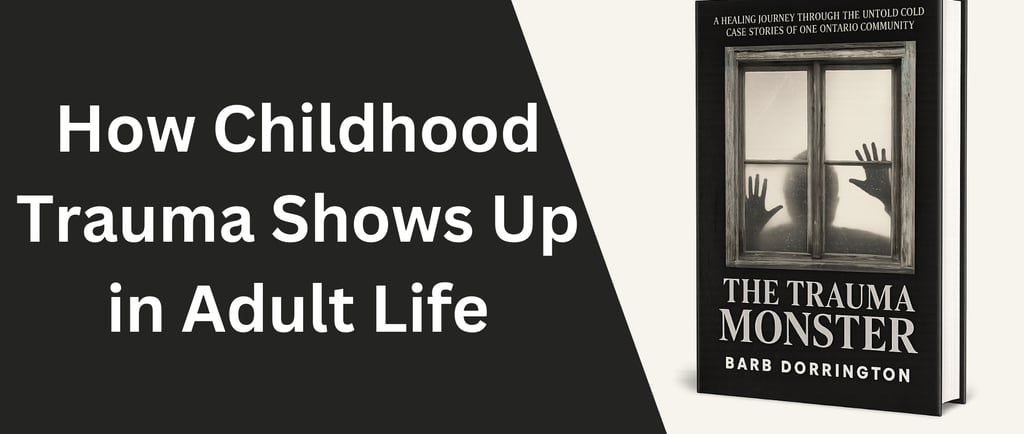How Childhood Trauma Shows Up in Adult Life
Barb Dorrington
7/14/20252 min read


The experiences we have in childhood lay the foundation for how we see ourselves and the world. When those early years include trauma, the impact often extends far beyond childhood—showing up unexpectedly in adult life. In her powerful book, The Trauma Monster, Barb Dorrington explores how childhood wounds can shape our adult behaviors, relationships, and sense of identity.
Many adults struggle with patterns they can’t explain—chronic anxiety, emotional numbness, people-pleasing, or fear of abandonment. These responses often trace back to unresolved childhood trauma, when the brain and nervous system were still developing and learning how to respond to danger.
Common Ways Childhood Trauma Shows Up in Adulthood
1. People-Pleasing and Boundary Issues
Children who learned that love or safety came from compliance often grow into adults who struggle to say no, prioritize others over themselves, and fear conflict or rejection.
2. Perfectionism and Overachievement
Trying to be "perfect" can be a coping strategy for feeling out of control or unsafe. Adult perfectionists may be driven by an internal voice that says, "If I just do better, I’ll be safe or loved."
3. Emotional Reactivity or Shutdown
Trauma can make the nervous system hyper-vigilant or dissociative. This might look like overreacting to minor triggers—or feeling numb when emotions become overwhelming.
4. Trust and Relationship Difficulties
If caregivers were unreliable or harmful, it can be hard to form secure attachments as an adult. You may either cling too tightly or avoid intimacy altogether.
5. Inner Critic and Low Self-Worth
Messages received in childhood—whether spoken or implied—can create an inner critic that repeats harmful beliefs, such as "I’m not enough" or "I don’t matter."
Moving Toward Healing Barb Dorrington’s work encourages survivors to bring curiosity and compassion to these patterns, rather than shame. They exist for a reason. They were protective. And with awareness, they can be changed.
Here’s how to begin:
· Name the Pattern: Acknowledge the behavior or emotion without judgment. Awareness is the first step.
· Connect the Dots: Ask yourself, "When did I first feel this way?" or "Where might I have learned this response?"
· Offer Yourself Compassion: Recognize that these patterns were survival strategies, not character flaws.
· Seek Support: Healing in safe, supportive relationships—whether with a therapist, a friend, or a support group—is key to changing deeply ingrained responses.
· Use Creative Expression: As Dorrington suggests in The Trauma Monster, writing, art, and storytelling can help process old wounds and bring clarity.
Understanding how childhood trauma shows up in adult life is not about blaming the past. It’s about giving yourself the tools and insight needed to create a different future. With compassion and courage, you can break free from old patterns and step into a life of emotional freedom and authentic connection.


